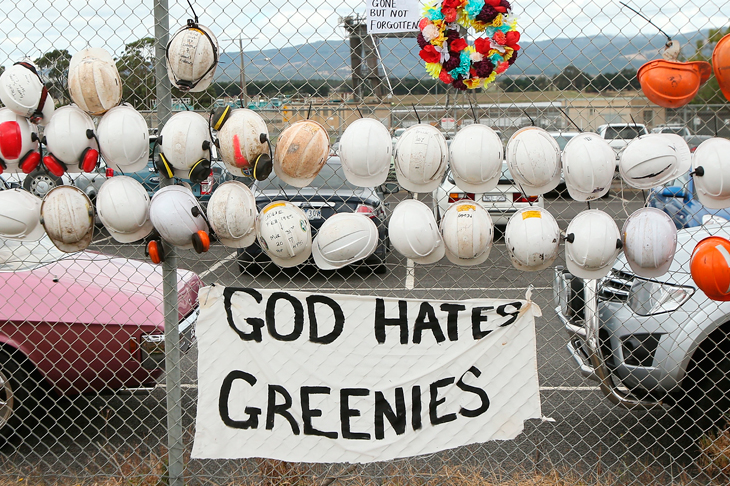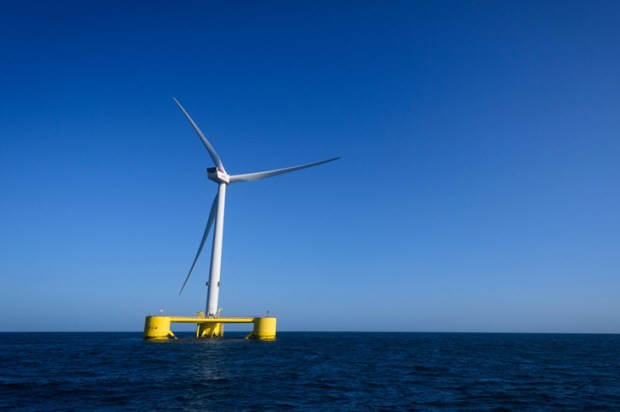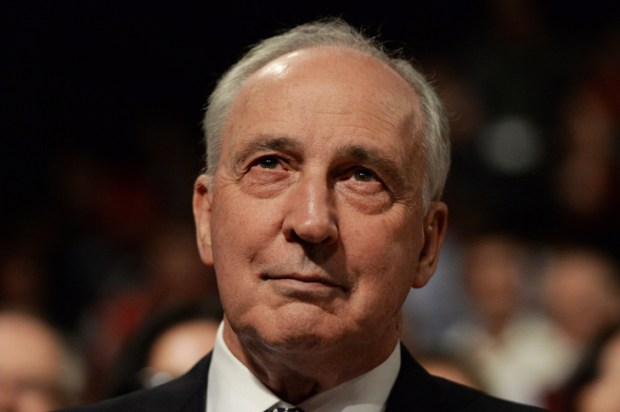The latest lunatic government intervention into Australian energy markets conjures up the old lady who swallowed a fly. In 2001, pandering to the misguided populist belief that renewable energy is cheap, the federal Coalition government set a small renewable energy target – just 4 percent of electricity generation – rather like swallowing a fly. Unfortunately, like the old lady who then swallows a spider to catch the fly, our governments – of all complexions – can’t stop intervening.
Now we have come to the sorry pass where a Coalition government, to loud cheers from the press gallery, will stop Australian companies from honouring commercial contracts to export gas to Asia. So much for all those North Asia free trade agreements that were meant to cement our trading relationships.
Less than two years ago, the federal minister for Industry and Science, Ian McFarlane, was thrilled to open an LNG plant in Queensland, lauding it for being the first in the world to export coal seam gas. Well, good luck paying back the $80 billion it cost to build Queensland’s LNG export industry. Now, Santos is being vilified for buying gas in the domestic market to export from its Queensland plant, yet since 2011 Santos has been trying to develop huge reserves of CSG near Narrabri, which could meet half NSW’s demand. It can’t because the NSW government has been pandering to Greenies and farmers. Santos is also being demonised for selling gas more cheaply abroad than at home but it is only doing so because the contracts were signed when gas prices were even cheaper than today.
Global oil prices plummeted from US$155 to US$ 29 a barrel between June 2008 and January 2016, taking gas prices down with them. Australian gas projects that were viable when prices were sky high have been abandoned, reducing the supply of gas, because Australia is the most expensive country in the world in which to build an LNG plant. Who’s fault is that?
Punishing Santos by preventing it from honouring contracts will only discourage investors from developing the additional gas supplies Australia needs. The day after the federal government announced its policy, almost $1 million was wiped off the value of affected gas companies. Santos’ share price which was $22 not long after it’s Gladstone LNG plant was announced is now under $3.50.
So why are Australian gas prices so high? Don’t blame Santos; it’s trying to increase supply. Blame the governments of Victoria, NSW and the Northern Territory for blocking the development of conventional and unconventional gas. And blame the Renewables Energy Target which is shutting down coal-fired power stations decades earlier than necessary and replacing them with expensive, unreliable wind farms.
Had the federal Labor government listened to the Productivity Commission in 2009 or had the federal Coalition government been able to persuade Labor, the crossbenchers and some of its own Green-tinged parliamentarians to listen to Dick Warburton in 2014 and end cross subsidies for renewable energy, we would not be in this predicament.
When the 1600-megawatt Hazelwood power plant was privatised in 1996, it was meant to run for another 40 years. In 2005, the Victorian Bracks Labor government provided the plant with enough coal to last until at least 2030.
But in 2009, the Rudd Labor government souped up the RET from 9,500 to 45,000 gigawatt-hours. The Productivity Commission warned this could drive coal-fired power stations out of business leaving huge supply gaps and price spikes.
‘Bollocks,’ wrote a columnist in the Age. ‘If the generators failed to maintain the stations during the transitional period to cleaner electricity supply, the State government has emergency powers that allow it to take over and run the asset.’
But by 2011, the federal Gillard Labor government was threatening to close Hazelwood. Luckily, in a lucid moment, it baulked at throwing workers out of their jobs. But it was only a stay of execution. The Victorian government added a further $20 million to Hazelwood’s costs last year by trebling the royalties on brown coal. The Victorian treasurer blithely claimed this would not be a problem. A year later, the RET and the increased royalties made Hazelwood unviable. The owner, Engie, asked for $400 million to keep Hazlewood going but the federal and state government turned a deaf ear and the plant which produced power for only $30/MWh per hour was gone, the ninth and the largest coal-fired power plant to close since 2010, generating more energy than all the wind farms in the National Energy Market together.
The closure of Hazelwood threatened the viability of the Portland aluminium smelter, so the Victorian government, having failed to subsidise the power plant which would have helped keep Victorian, SA and NSW electricity cheaper and more stable, instead subsidised a single business. Yet even in the face of this disaster, the green cheer squad were sanguine; the closure of Hazelwood ‘would have limited impact on energy prices’ they said. In fact, it will lift household power bills by 20 per cent, with futures contracts up 200 per cent from a year ago. All this in a state with 27 trillion cubic feet of gas reserves, which has banned fracking, has a moratorium on conventional gas exploration until 2020, and whose offshore gas production will fall 40 per cent by 2025.
The SA government also rejected a bid from Alinta for $25 million to keep its cheap coal-fired power station open for five years. Instead, the SA government will spend $550 million building a gas-fired plant, a battery to store wind and solar energy and renting diesel generators. The federal government mocked SA for driving power plants out of business and then spending a fortune shoring up energy but the federal government’s RET did just as much damage to coal-fired plants and now it is spending $2 billion to upgrade the Snowy in a belated attempt to fill the energy gap the RET created.
Never mind coal seam gas, you’d need laughing gas to be amused by this green buffoonery that taxpayers and consumers are forced to finance. Our politicians should recall the demise of the old lady who tried to solve each problem by doing something even more stupid. The song concludes, ‘there was an old lady who swallowed a horse – she’s dead of course.’
How long before our businesses succumb to the same fate?
Got something to add? Join the discussion and comment below.
Get 10 issues for just $10
Subscribe to The Spectator Australia today for the next 10 magazine issues, plus full online access, for just $10.
You might disagree with half of it, but you’ll enjoy reading all of it. Try your first month for free, then just $2 a week for the remainder of your first year.














Comments
Don't miss out
Join the conversation with other Spectator Australia readers. Subscribe to leave a comment.
SUBSCRIBEAlready a subscriber? Log in